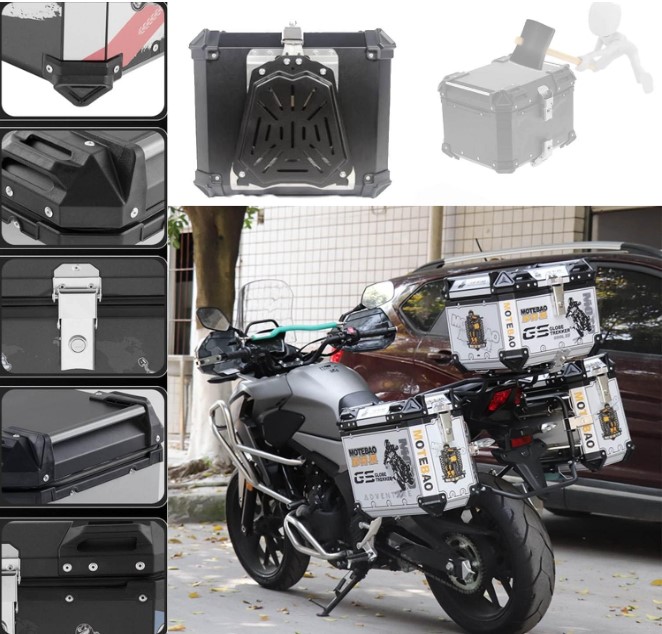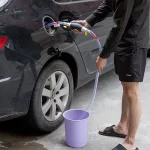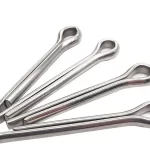A top box, also known as a rear box or trunk, is a storage compartment designed to be mounted on the rear rack of a bicycle. It provides additional carrying capacity for cyclists, allowing them to transport larger or bulkier items that wouldn’t fit in a typical bike bag or pannier.
The primary purpose of a top box is to increase the cargo-carrying capabilities of a bicycle, making it more practical for commuting, touring, or running errands. These boxes offer a convenient and secure way to store and transport items like groceries, work essentials, spare parts, or even a change of clothes.
Top boxes come in various shapes, sizes, and materials to suit different needs and preferences. Some common types include:
- Hard-shell Top Boxes: These are rigid, typically made of plastic or fiberglass, and offer excellent protection against the elements and potential impacts. They often feature a hinged lid for easy access to the contents.
- Soft-shell Top Boxes: Constructed from durable, water-resistant fabrics like nylon or polyester, these top boxes are lightweight and collapsible, making them easy to store when not in use. They provide a more flexible storage solution but offer less protection than hard-shell boxes.
- Insulated Top Boxes: Designed with insulating materials, these top boxes help keep perishable items like food or drinks cool during transportation, making them ideal for picnics or grocery runs.
- Expandable Top Boxes: Some top boxes feature an expandable design, allowing you to increase or decrease their capacity as needed, accommodating varying load sizes.
Top boxes are typically secured to the rear rack of a bicycle using a mounting system, which can be quick-release or semi-permanent, depending on the model and user preferences.
Table of Contents
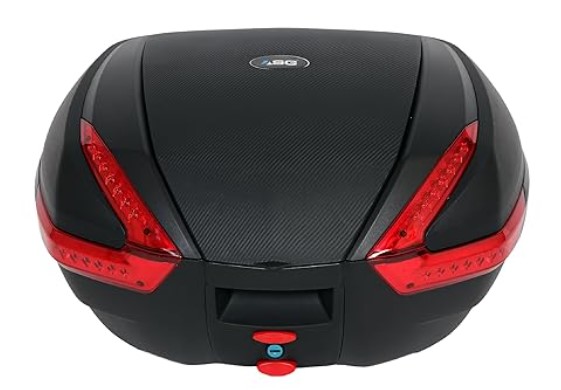
Benefits of Using a Top Box
A top box for your bike offers several compelling benefits that can enhance your cycling experience and make transporting gear more convenient. One of the primary advantages is increased storage capacity. Top boxes provide ample space to carry essential items like tools, spare tubes, rain gear, snacks, and even small personal belongings, freeing up space in your backpack or saddlebags.
Another significant benefit is easy access. Unlike traditional panniers or saddlebags, top boxes are mounted on the rear rack, allowing you to quickly retrieve or stow items without having to dismount or bend down. This can be particularly advantageous when you need to grab something on the go or during long rides.
Top boxes also offer excellent weather protection for your belongings. Most quality top boxes are designed to be water-resistant or even waterproof, safeguarding your gear from rain, snow, or road spray. This feature ensures that your valuables remain dry and secure, even in inclement weather conditions.
Additionally, top boxes can contribute to improved aerodynamics compared to traditional panniers or backpacks. Their sleek and streamlined design minimizes wind resistance, potentially enhancing your cycling efficiency and speed. This can be particularly beneficial for road cyclists or those who prioritize aerodynamic performance.
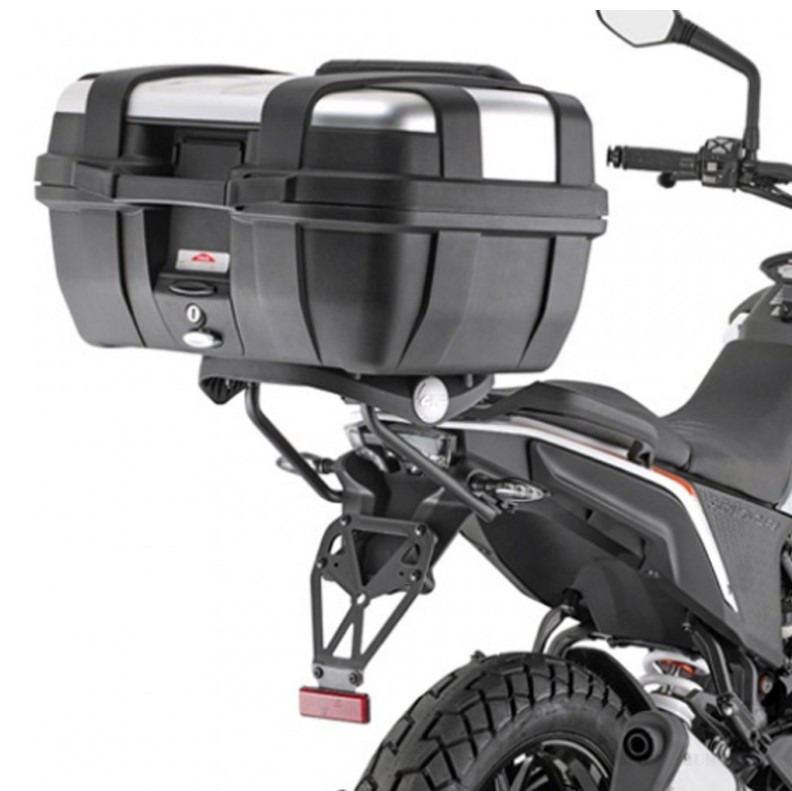
Factors to Consider When Choosing a Top Box
When selecting a top box for your bike, several factors should be taken into account to ensure you get the right one for your needs.
Size and Capacity: Top boxes come in various sizes, ranging from compact models to larger ones that can accommodate multiple helmets or a significant amount of gear. Consider the items you’ll be carrying and choose a size that provides ample storage space without being too bulky or heavy for your bike.
Mounting System: The mounting system is crucial for secure and stable attachment to your bike. Some top boxes utilize a rack system, while others have a quick-release or semi-permanent mounting mechanism. Ensure compatibility with your bike’s frame and consider ease of installation and removal.
Material: Top boxes are typically constructed from durable materials like plastic, fiberglass, or aluminum. Plastic boxes are lightweight and affordable, while fiberglass and aluminum offer increased strength and resistance to impacts. Consider the material’s durability, weight, and weather resistance based on your intended use.
Security Features: To protect your belongings, look for top boxes with integrated locks or the ability to add a cable lock or padlock. Some models also feature reinforced construction or tamper-proof designs for added security.
Weight: The weight of the top box, especially when loaded, can affect your bike’s handling and performance. Opt for a lightweight option if you frequently ride long distances or on challenging terrain. Additionally, consider the box’s weight distribution to maintain proper balance.
Aerodynamics and Design: While not a primary concern for all riders, some top boxes are designed with aerodynamic shapes to reduce wind resistance and drag. This can be beneficial for those who prioritize speed and efficiency on their rides.
By carefully evaluating these factors, you can select a top box that meets your specific needs, ensuring a secure and convenient storage solution for your cycling adventures.
Top Box Installation and Mounting
Installing a top box on your bike is a straightforward process, but it’s important to follow the correct steps to ensure a secure and safe fit. The first step is to determine if your bike is compatible with a top box and the necessary mounting hardware. Most top boxes are designed to be mounted on rear bike racks, so you’ll need to have a compatible rack installed on your bike.
Many top box manufacturers offer universal mounting kits that can be adjusted to fit a variety of bike racks. These kits typically include brackets, straps, and other hardware necessary for securing the top box to the rack. It’s essential to follow the manufacturer’s instructions carefully and use the correct mounting hardware for your specific bike and rack setup.
Once you have the necessary mounting hardware, the installation process typically involves the following steps:
- Attach the mounting brackets to the top box: Most top boxes have pre-drilled holes or built-in mounting points where the brackets can be securely attached using the provided hardware.
- Position the top box on the bike rack: Place the top box on the bike rack and adjust its position to ensure it’s centered and doesn’t interfere with the bike’s movement or your pedaling.
- Secure the top box to the rack: Use the provided straps, clamps, or other hardware to securely fasten the top box to the bike rack. Make sure the top box is tightly secured and won’t shift or move during your ride.
- Check for clearance and stability: Once the top box is installed, check that it doesn’t interfere with the bike’s steering or braking systems, and that it doesn’t obstruct your view while riding. Additionally, test the stability of the top box by gently pushing or pulling it to ensure it’s securely mounted.
It’s important to periodically check the mounting hardware and tighten any loose components to maintain a secure fit. Some top boxes may require additional adjustments or fine-tuning to achieve the perfect fit and stability on your specific bike and rack setup.
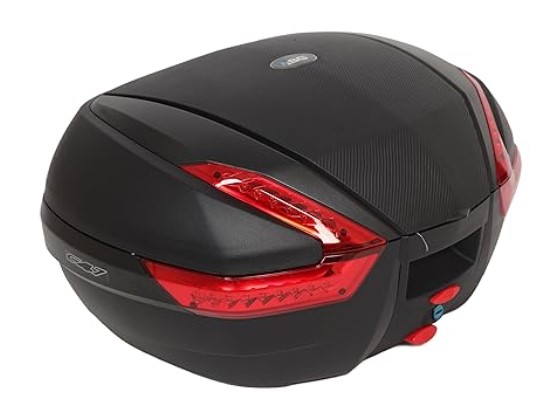
Top Box Usage and Organization
A bike top box provides ample storage space, but packing it efficiently is key to maximizing its capacity and keeping your belongings organized. Start by categorizing your items into groups, such as tools, spare parts, clothing layers, and essentials. Use packing cubes or stuff sacks to separate these categories and keep everything tidy.
When loading the top box, place heavier items at the bottom and toward the rear to improve weight distribution and handling. Secure loose items with bungee cords or straps to prevent shifting during transit. For added protection, wrap fragile objects in clothing or towels.
Consider packing a small toolkit, spare tube, tire levers, and a hand pump in an easily accessible compartment or side pocket. This way, you can quickly retrieve these essential items in case of a roadside repair. Additionally, keep frequently used items like snacks, maps, or a rain jacket near the top for easy access.
To secure the contents, many top boxes feature integrated locking mechanisms or allow you to pass a cable lock through the lid and mounting hardware. Invest in a high-quality lock to deter theft and ensure your belongings remain safe during stops or overnight stays.
Remember, proper packing and organization not only maximize space but also contribute to a smoother, more enjoyable ride by keeping your bike’s handling balanced and your essentials within reach.
Waterproof and Weather-Resistant Top Boxes
One of the most significant advantages of investing in a high-quality top box for your bike is the protection it offers against the elements. Whether you’re commuting through city streets or embarking on an adventurous off-road journey, your belongings deserve to be shielded from rain, snow, and other inclement weather conditions.
Top-tier bike top boxes are constructed using waterproof materials, such as durable plastics or sturdy fabrics treated with water-resistant coatings. These materials create an impermeable barrier, preventing water from seeping in and potentially damaging your valuables. Additionally, many top boxes feature specialized sealing systems, including gaskets, O-rings, or compression locks, which ensure a tight, watertight seal when the lid is closed.
The importance of weather protection cannot be overstated, especially for cyclists who frequently encounter unpredictable conditions. Imagine being caught in a sudden downpour or navigating through a heavy snowfall – a waterproof top box can provide peace of mind, knowing that your essentials, such as electronics, documents, or spare clothing, remain dry and secure.
Furthermore, some top boxes are designed with additional weather-resistant features, such as UV protection to prevent fading or cracking from prolonged sun exposure, and insulation to maintain a stable internal temperature, safeguarding temperature-sensitive items like perishable foods or delicate equipment.
By investing in a waterproof and weather-resistant top box, you can confidently embark on your cycling adventures, knowing that your belongings are well-protected, no matter the conditions you encounter along the way.
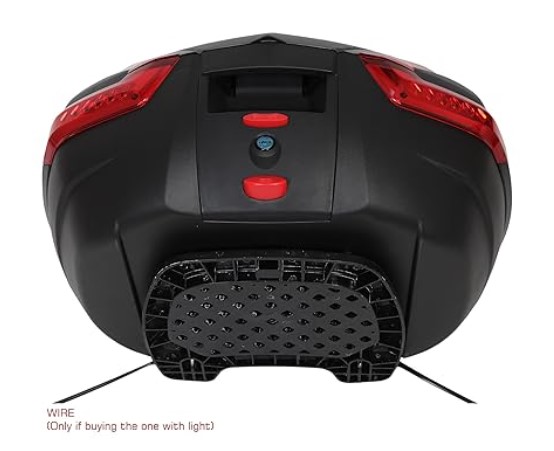
Security Features in Top Boxes
One of the primary concerns when using a top box for your bicycle is keeping your belongings secure. Top-quality bike top boxes address this issue by incorporating robust security features to deter theft and tampering. Here are some common security measures found in reliable top boxes:
Locking Mechanisms: Most top boxes come equipped with integrated locking systems that allow you to secure the lid and contents. These locks can range from simple key-operated mechanisms to more advanced combination or digital locks. Some models even offer the option of using the same key as your bicycle lock for added convenience.
Anti-Theft Devices: To prevent the entire top box from being stolen off your bike, many manufacturers include anti-theft features. These can include reinforced mounting hardware that resists prying, security cables or chains that tether the box to your bicycle frame, or integrated locking mechanisms that secure the box to the rack or mounting system.
Tamper-Proof Designs: Top-quality top boxes often feature tamper-proof designs that make it difficult for unauthorized individuals to access the contents. This can include concealed hinges, seamless construction, or reinforced lids that resist prying or cutting. Some models may also incorporate tamper-evident features, such as seals or indicators that reveal if the box has been improperly accessed.
By prioritizing security features, reputable top box manufacturers ensure that your valuables remain safe and secure while you’re on the move. Whether you’re commuting to work, running errands, or embarking on a cycling adventure, a secure top box can provide peace of mind, allowing you to focus on enjoying the ride.
Top Brands and Models of Bike Top Boxes
When it comes to bike top boxes, several brands have established themselves as leaders in the market, offering a range of high-quality options to suit various needs and preferences. Here are some of the top brands and their popular models:
Thule
Thule is a renowned Swedish brand known for its innovative and durable bike accessories, including top boxes. Their top box models are highly regarded for their sleek designs, ample storage space, and ease of use. Some popular Thule top box models include:
- Thule Motion XT XXL: This top box boasts an impressive 22 gallons of storage capacity, making it ideal for longer trips or carrying bulky items. It features a dual-side opening system for easy access and a torque-limiting mounting system for secure installation.
- Thule Touring M: A mid-sized option, the Touring M offers 16 gallons of storage space and is designed for aerodynamic performance. It comes with a quick-mount system for easy on-and-off mounting and is available in various colors.
Yakima
Yakima is a well-respected American brand that has been producing top-quality bike racks and accessories for decades. Their top boxes are known for their ruggedness and versatility. Popular Yakima top box models include:
- Yakima RocketBox Pro: This aerodynamic top box features a dual-sided opening system, integrated push button security, and a sturdy mounting system. It’s available in various sizes, ranging from 11 to 21 cubic feet of storage capacity.
- Yakima SkyBox: The SkyBox series offers a range of sizes, from 12 to 21 cubic feet, and is designed for easy installation and removal. It features a textured lid for better grip and a sturdy construction to withstand harsh weather conditions.
INNO
INNO is a Japanese brand that specializes in vehicle racks and accessories, including top boxes for bikes. Their products are known for their sleek designs and innovative features. Some popular INNO top box models include:
- INNO Wedge Plus: This top box features a unique wedge shape that enhances aerodynamics and reduces wind noise. It offers 15 cubic feet of storage space and comes with a dual-sided opening system for easy access.
- INNO Inca: The Inca series is a budget-friendly option that offers ample storage space and a durable construction. It’s available in various sizes, ranging from 11 to 18 cubic feet.
When comparing top box models, consider factors such as storage capacity, ease of installation and removal, security features, aerodynamic design, and overall durability. Additionally, consider the compatibility of the top box with your bike rack system and the specific needs of your cycling adventures.
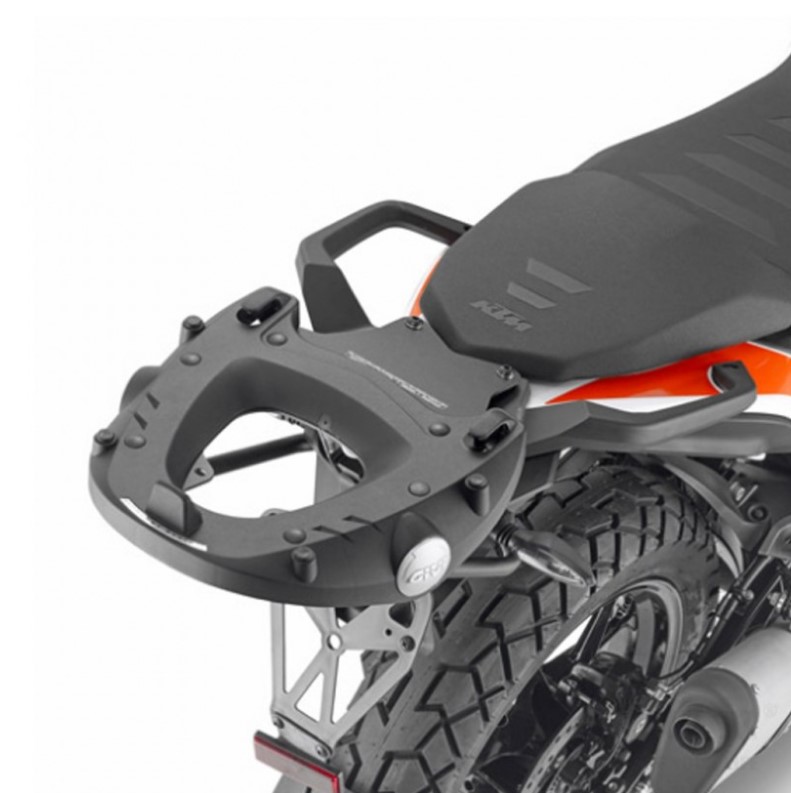
Caring for and Maintaining Your Top Box
Proper care and maintenance are crucial for extending the lifespan of your bike top box. Regular cleaning, appropriate storage, and timely repairs can help keep your top box in excellent condition for years to come.
Cleaning
Cleaning your top box regularly is essential to prevent the buildup of dirt, grime, and debris, which can lead to premature wear and tear. Use a mild soap and water solution, along with a soft cloth or sponge, to gently wipe down the exterior and interior surfaces. Avoid using harsh chemicals or abrasive materials, as they can damage the finish or compromise the weather-resistant properties of the top box.
Storage
When not in use, store your top box in a dry, cool, and well-ventilated area, away from direct sunlight and extreme temperatures. Prolonged exposure to sunlight can cause fading and degradation of the material over time. If storing the top box for an extended period, consider covering it with a breathable cloth or tarp to protect it from dust and debris.
Repairs
Inspect your top box regularly for any signs of damage, such as cracks, dents, or worn-out seals. If you notice any issues, address them promptly to prevent further deterioration. Minor repairs, like replacing seals or touch-up painting, can often be done at home with the right tools and materials. For more significant damage, it’s best to consult a professional or the manufacturer for proper repair or replacement options.
Extending Lifespan
To extend the lifespan of your top box, follow the manufacturer’s recommended maintenance schedule and guidelines. Lubricate hinges and moving parts as needed to ensure smooth operation and prevent premature wear. Additionally, avoid overloading the top box beyond its recommended weight capacity, as this can strain the mounting system and potentially cause damage.
By following these simple care and maintenance tips, you can enjoy the convenience and functionality of your bike top box for many years to come.
Top Box Alternatives and Substitutes
While top boxes offer a convenient and secure way to carry cargo on your bike, they are not the only option available. Panniers, baskets, trailers, and backpacks are all viable alternatives that cater to different needs and preferences. Let’s explore these options and compare them to top boxes.
Panniers
Panniers are versatile bags that attach to a rack mounted on your bike’s rear or front. They come in various sizes and designs, allowing you to carry a substantial amount of gear or groceries. Panniers offer excellent weight distribution and stability, as the load is centered and low on the bike. However, they can make it more challenging to mount and dismount your bike, and they may not provide the same level of protection as a hard-shell top box.
Baskets
Bike baskets are a classic and practical solution for carrying smaller loads. They can be mounted on the front or rear of your bike, providing easy access to your belongings. Baskets are lightweight and affordable, but they offer limited storage space and minimal protection from the elements compared to top boxes or panniers.
Trailers
For those who need to transport larger or bulkier items, bike trailers are an excellent option. These detachable units hitch to the rear of your bike, allowing you to haul significant loads without compromising the bike’s handling. Trailers come in various sizes and designs, from single-wheel models to multi-wheel cargo trailers. While convenient, they can be cumbersome in tight spaces and may require additional storage when not in use.
Backpacks
Backpacks are a familiar and straightforward solution for carrying gear on your bike. They distribute the weight evenly across your back and allow for easy access to your belongings. However, backpacks can cause discomfort on longer rides, especially when carrying heavier loads. Additionally, they may not offer the same level of protection for your cargo as a top box or pannier.
Comparison with Top Boxes
Top boxes offer several advantages over these alternatives. They provide a secure and weather-resistant enclosure for your belongings, protecting them from the elements and potential theft. Top boxes also keep the weight centered and low on the bike, minimizing the impact on handling and stability. However, they may have a limited capacity compared to panniers or trailers, and their fixed position can make loading and unloading more challenging.
Ultimately, the choice between a top box and its alternatives depends on your specific needs, the type of riding you do, and the cargo you typically carry. Consider factors such as capacity, weight distribution, ease of access, and weather protection when deciding which option best suits your biking adventures.

